Multimeter
What is a multimeter?
Multimeters are devices designed to measure different electrical values. Depending on how they are made, they can simply combine the functions of a voltmeter (DC measurement) and an ammeter (AC measurement) or they can have additional functions. With the modernisation of technology, the range of multimeters available on the market is broader than before and their accuracy and precision has increased. Nowadays multimeters can be found in specialised retail outlets for electrical engineering, with an large number of functions that can meet any consumer requirement. See below for information about these features of modern multimeters and about their benefits and advantages in the home and in industry. Some helpful tips on how to use a multimeter are also set out below.
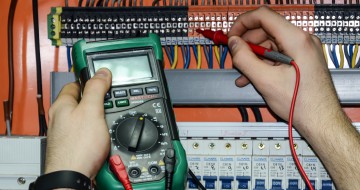
History of multimeters
Before describing the functions of multimeters in more detail, however, here is some information about the history and development of this product over the years. The multimeter was invented by the British Donald MacAdie. In the 1920s he invented the first predecessor of the multimeter, which could measure volts, amperes and ohms. Three years later, this appliance was placed on the market and generated considerable interest. Then came pocket multimeters, which appear to have two major advantages: firstly, they are small and convenient to carry anywhere, and secondly, they are much cheaper than MacAdie's device. However, the disadvantages of pocket multimeters lie their crude technical parameters and their unreliable measurement process. Over time, these imperfections are gradually being eliminated and new multimeters are constantly emerging on the market with more and more features and functions.
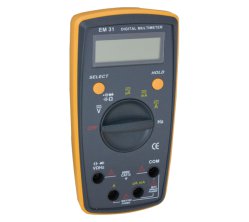
What distinguishes modern multimeters from their predecessors?
Firstly, contemporary multimeters have many more functions that can be used for a variety of applications (information about these applications is set out in the next section). The range of multimeters on the market is expanding continuously, with an increasing variety of types, models and even shapes. For example, we can now find appliances shaped like pliers, pens, handles, and so on. This variation allows users to choose exactly the multimeter they need to meet their requirements. Most modern multimeters work on batteries, but there are also appliances powered by the grid or even by solar cells. The latest models also have smart features such as automatic bandwidth change, a memory that records past measurements, an auto-off option, etc.
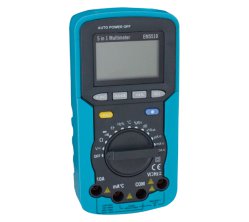
Multimeters: main functions and applications
The functions and applications of modern multimeters go beyond the DC and AC measurements available in the simplest models in the category and extend to temperature measurement and resistance testing. See below for more information about each of these multimeter functions.
1. current measurement: multimeters are most frequently used for measuring the current. But this is not as simple and easy as many people think. Regardless of the precision of the multimeter, measurement rules must be strictly observed. With parallel voltage measurement, the power in the circuit must be physically cut before turning on the multimeter. It is important to ensure that the two probes are properly connected. The black wire is connected to the power supply side and the red wire to the consumer side. You must also accurately specify the current range flowing through the multimeter.
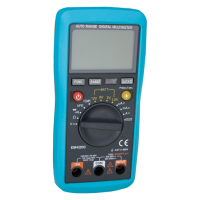
2. electrical continuity measurement: this involves measuring the continuity of an electrical circuit. Why is this important? Because it indicates whether individual components of the circuit are properly connected. In order to detect even the smallest resistance values between two points, turn the switch to the sign depicting breaking waves. This multimeter feature will help you to check that the electrical circuit is in order and take corrective action if required.
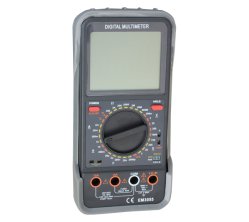
Multimeter - 5
3. Temperature measurement: new multimeter models also have a temperature measurement function. This function is usually marked "t °", but in some cases it may be replaced by C °, or TEMP for example. For the process itself you will need an additional instrument, i.e. a probe. The probe must be connected to the multimeter and must touch the object whose temperature you wish to measure. As you know, the basic unit of temperature is degrees. This is also the case with multimeters, but we still recommend that you first check on the scale whether the measurement is set to degrees Celsius or Fahrenheit.
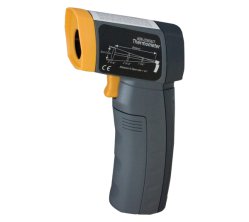
4. diode measurement: the polarity of diodes is another factor that can be measured using modern multimeters. Again, the switch has a special diode sign. Select this option to start measuring the polarity of the diode. The next step is to inspect the diode and find its cathode sign. Eventually the multimeter will show you a voltage drop on the diode in the current flow direction.
5. smart features: as mentioned above, innovative multimeters can also have a variety of smart features that will help you more accurately measure electrical values and make it easier and more convenient to use the multimeter itself. Examples of these functions include an automatic bandwidth change and a memory that records past measurements, allowing for quick comparison of the results of several measurements made over time. With the automatic off option, you can programme the multimeter to carry out a particular task and turn itself off after a certain interval.
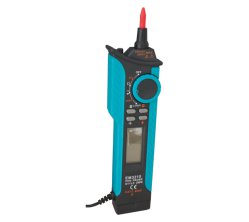
How to choose the right multimeter
Given the rich range of multimeters available on the market, particular attention has to be paid to selecting a product of this category. Several key factors should be taken into account. These include the type of multimeter, the added features and extras and the manufacturer of the device. See below for the most important criteria for choosing a multimeter:
- type of multimeter: in principle, there are two main types of multimeters: analogue and digital. The main difference between them lies in how the multimeter shows the results. With an analogue device, the electrical values are shown by needles. With digital multimeters, the results are visible on a specially added screen. Which of the two types of multimeter you choose depends mostly on your personal requirements and preferences for this indicator.
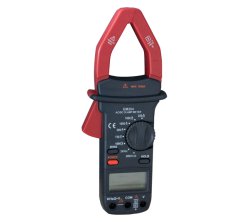
- features available: as you saw in the previous section, modern multimeters can have multiple functions. Clearly, particular multimeter models will not have some of these functions. Simpler models are only equipped with the standard functions for measuring direct and alternating current. But other multimeters have a variety of properties (temperature measurement, electrical continuity measurement, etc.). This also affects their price. So think about exactly what multimeter you need and how much you are willing to pay for it.
- extras: optional extras should not be overlooked when choosing a multimeter. These are mainly related to features and functions for obtaining more efficient performance from the multimeter. Examples include individual thermocouple inputs, a temperature scale and an analogue indicator function (or a representation of the electrical value as a continuous line). Individual multimeters can of course have a number of other extras that you should be aware of before you make your final choice.
- manufacturer: the quality and reliability of the multimeter depend substantially on its manufacturer. We encourage you to focus on multimeters from the catalogues of established and proven brands and manufacturers. ElmarkStore has the best offers in the Multimeter category of ELMARK, one of the leading manufacturers of lighting equipment in South East Europe. ELMARK products will guarantee you quality, ease of use and excellent results.
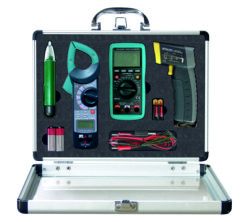
Multimeters - useful tips
Below are some useful tips for using the multimeter you have purchased. These tips will help you make more accurate measurements and maximise the benefits and advantages of owning it:
- take care of the multimeter: this is the most important advice to start with. A multimeter will last a very long time if you look after it and take special care when using it. Read all the instructions and directions provided by the manufacturer and follow them each time you need to use the multimeter. When making measurements, take care to carry out the correct sequence of actions and avoid pressing the wrong keys. This will ensure not only more accurate results but will also reduce the risk of malfunction or damage to the multimeter.
- do not let the transistor get warm: the results obtained from such measurements can very easily be influenced by the temperature. It is a serious mistake to leave the transistor for a long time in your hands because it will reduce the accuracy and precision of the multimeter. If anything like this happens, we recommend that you hold the transistor for longer in the multimeter in order for the temperature to stabilise and to obtain adequate results.
- capacitors: when measuring capacitors, more specific measures should be taken. Before starting the measurement itself, discharge the capacitor by shorting its terminals. Only then can it be placed in the multimeter socket. If the measuring scale has subdivisions, start with the largest.
Whether you are looking for a simple multimeter or a device with more functions and applications, ElmarkStore is the right place for you. The multimeters offered in our online shop will meet your requirements in the best way possible and will provide accurate and precise measurements of the required electrical values.
What distinguishes modern multimeters from their predecessors?
Multimeters: main functions and applications
-
to the product
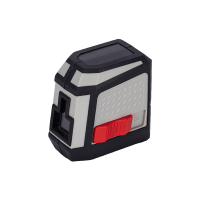
-
to the product
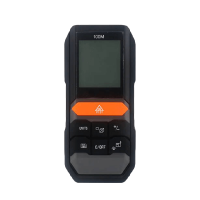 EL- 201 LASER DISTANCE 100 METERS MEASURE TOOL 519002
EL- 201 LASER DISTANCE 100 METERS MEASURE TOOL 519002Type of the device Laser distance meter Warranty 
-
-
to the product
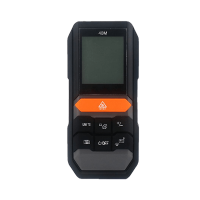 EL- 201 LASER DISTANCE 40 METERS MEASURE TOOL 519001
EL- 201 LASER DISTANCE 40 METERS MEASURE TOOL 519001Type of the device Laser distance meter Warranty 
-
-
to the product
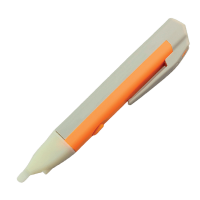 NON-CONTACT VOLTAGE AC DETECTOR GK8 519GK8
NON-CONTACT VOLTAGE AC DETECTOR GK8 519GK8-
Brand

Type of the device Detektor МEASURED MAGNITUDE V Warranty 
-
Brand
-
to the product
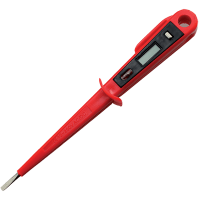 MULTIFUNCTIONAL VOLTAGE TESTER EL-8736 519207
MULTIFUNCTIONAL VOLTAGE TESTER EL-8736 519207-
Brand

Type of the device Phase meter МEASURED MAGNITUDE V Warranty 
-
Brand
-
to the product
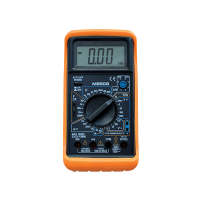 DIGITAL MULTIMETER ЕМ890G 519890
DIGITAL MULTIMETER ЕМ890G 519890-
Brand

Type of the device Multimeter МEASURED MAGNITUDE V/A/MΩ/μ/kHz Warranty 
-
Brand
-
to the product
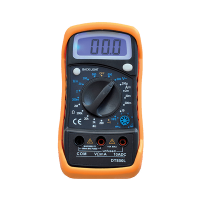 DIGITAL MULTIMETER ЕМ850L 519850
DIGITAL MULTIMETER ЕМ850L 519850-
Brand

Type of the device Multimeter МEASURED MAGNITUDE V/A/MΩ Warranty 
-
Brand
-
to the product
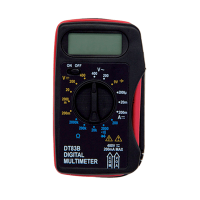 DIGITAL MULTIMETER ЕМ83B 519083
DIGITAL MULTIMETER ЕМ83B 519083-
Brand

Type of the device Multimeter МEASURED MAGNITUDE V/mA/KΩ Warranty 
-
Brand
-
to the product
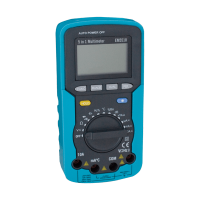 EM5510 MULTIMETER 5195510
EM5510 MULTIMETER 5195510-
Brand

Type of the device Multimeter МEASURED MAGNITUDE V/A/MΩ/μF/kHz Warranty 
-
Brand
-
to the product
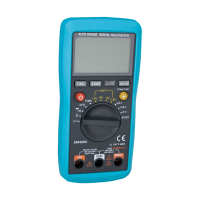
-
to the product
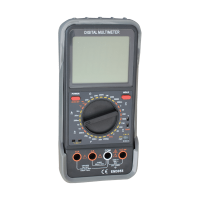 EM3055 MULTIMETER 5193055
EM3055 MULTIMETER 5193055-
Brand

Type of the device Multimeter МEASURED MAGNITUDE V/A/MΩ/η/μF/°С Warranty 
-
Brand
-
to the product
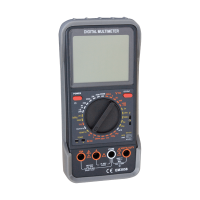 EM3058 MULTIMETER 5193058
EM3058 MULTIMETER 5193058-
Brand

Type of the device Multimeter МEASURED MAGNITUDE V/A/MΩ/η/μF/kHz Warranty 
-
Brand
-
to the product
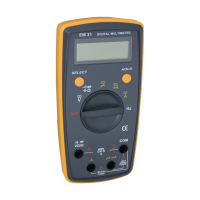 EM31 MULTIMETER 519031
EM31 MULTIMETER 519031-
Brand

Type of the device Multimeter МEASURED MAGNITUDE V/A/MΩ/ηF/μF/kHz Warranty 
-
Brand
-
to the product
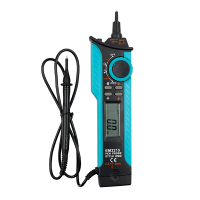 EM3215 MULTIMETER PEN TYPE 5193215
EM3215 MULTIMETER PEN TYPE 5193215-
Brand

Type of the device Multimeter МEASURED MAGNITUDE V/mA/KΩ Warranty 
-
Brand
-
to the product
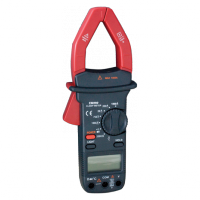 EM202 MULTIMETER CLAMP TYPE 519202
EM202 MULTIMETER CLAMP TYPE 519202-
Brand

Type of the device Multimeter clamp МEASURED MAGNITUDE V/A/kΩ/°С Warranty 
-
Brand
-
to the product
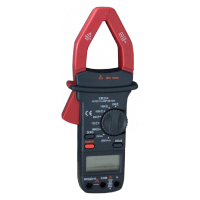 EM204 MULTIMETER CLAMP TYPE 519204
EM204 MULTIMETER CLAMP TYPE 519204-
Brand

Type of the device Multimeter clamp МEASURED MAGNITUDE V/A/kΩ/kHz Warranty 
-
Brand
-
to the product
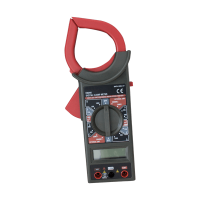 EM266 MULTIMETER CLAMP TYPE 519266
EM266 MULTIMETER CLAMP TYPE 519266-
Brand

Type of the device Multimeter clamp МEASURED MAGNITUDE V/A/kΩ Warranty 
-
Brand
-
to the product
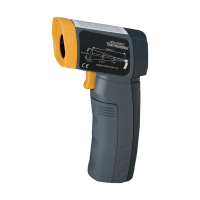 EM520A INFRARED TEMPERATURE METER 519520
EM520A INFRARED TEMPERATURE METER 519520-
Brand

Type of the device Temperature Meter МEASURED MAGNITUDE °С/°F Warranty 
-
Brand
-
to the product
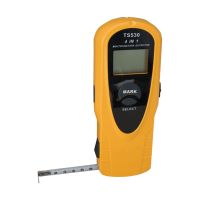
-
to the product
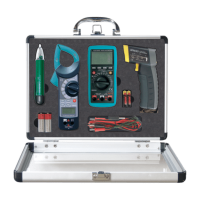 ETK06A INDUSTRIAL REPAIR KIT 51906A
ETK06A INDUSTRIAL REPAIR KIT 51906A-
Brand

-
Brand
Prices are VAT inclusive





